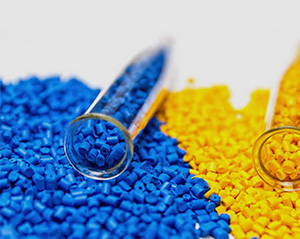Reactive flame retardants are mostly used in thermosetting polymer materials
Release date:2022-05-24 Author:翊成网络g Click:
Flame retardants are used to improve the flame retardancy of polymer materials. By increasing the ignition point of polymer materials or reducing the burning speed of materials, it can increase rescue time, save lives and reduce losses.
Flame retardants can be divided into high molecular polymer flame retardants and small molecule flame retardants according to their structure, and can be divided into additive flame retardants and reactive flame retardants according to their use methods. According to whether the material contains halogen, it can be divided into halogen-free flame retardants and halogen-free flame retardants. However, additive flame retardants are mostly used in thermoplastic polymer materials. They do not chemically react with other components in the material, and only use physical way exists in polymer materials. Reactive flame retardants are mostly used in thermosetting polymer materials, participate in the chemical reaction of synthetic polymer materials, and become the structural unit of polymer materials.

When the polymer material is ignited by an open flame, a violent oxidation reaction will occur, releasing a large amount of hydroxyl groups, because the hydroxyl groups are very active and can easily combine with other substances to produce water and other organic substances after the combination. Other organic matter and oxygen are further combined and decomposed to form new organic matter, and the combustion continues in this series of cyclic reactions. In this process, how do flame retardants work? According to the three elements of combustibles, combustion accelerants and ignition sources, the flame retardant principles of flame retardants can be summarized as:
1. Flame retardant is achieved by heat absorption. For example, the inorganic flame retardant aluminum hydroxide decomposes at high temperature, releasing crystal water, and the crystal water evaporates into water vapor. This process will absorb a lot of heat and reduce the temperature of the material surface. , flame retardant.
2. Dilute oxygen by generating incombustible gas to slow down the combustion rate, such as aluminum hydroxide flame retardant, the water vapor generated can reduce the oxygen concentration around the material and inhibit the spread of fire.
3. Form a dense covering layer on the surface of the material to isolate the material from contact with oxygen, such as phosphorus-based flame retardants, which will become more stable cross-linked solid substances or carbonized layer wrapping materials at high temperatures, thereby preventing further combustion.
4. Capture the free radicals involved in the combustion reaction and inhibit the free radical chain reaction, such as brominated flame retardants. At high temperature, when the polymer material is thermally decomposed, the brominated flame retardants and thermal decomposition products enter the gas phase combustion zone at the same time, Capture the free radicals in the gas phase combustion zone and inhibit the free radical chain reaction, thereby preventing the flame from propagating.

 Language
Language






 选择语言
选择语言

 苏公网安备 32100302010866号
苏公网安备 32100302010866号